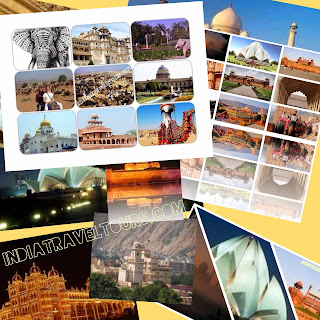Any visitor contemplating India as a destination often touches base at New Delhi and more often than not, heads to Agra straightaway as the first port of call to have a glimpse of the eternal Taj Mahal. Although New Delhi and Agra both happen to be a part of north India, but very often, the visitor is entirely oblivious of most of the charms of this region. Thus tourism in north India is yet to take off, with the same flamboyant élan and vitality as in Kerala or Rajasthan. However, one has to acknowledge that Tours to north India are highly popular among the domestic population from other parts of the country, which throng the major north Indian religious sites in hordes. If somehow, the state owned tourism boards could repackage the existing North India Tours to make them more attractive for the overseas visitor, while taking on board the various North India Travel operators, it could revolutionize the grassroots economy in this region.
Not only the major religious sites, northern India is replete with major historical sites which witnessed earth-shattering events that changed the course of the national history. However, more often not, there are no monuments or memorials, or if they are there, are often in shambles with poor upkeep, with meager logistical facilities. Likewise, barring a few, many a major museum is in a state of disrepair, offering a lackluster façade, which, instead of welcoming researchers and serious students of history and archaeology, prove to be a put off.
Not only the major religious sites, northern India is replete with major historical sites which witnessed earth-shattering events that changed the course of the national history. However, more often not, there are no monuments or memorials, or if they are there, are often in shambles with poor upkeep, with meager logistical facilities. Likewise, barring a few, many a major museum is in a state of disrepair, offering a lackluster façade, which, instead of welcoming researchers and serious students of history and archaeology, prove to be a put off.
 |
| North India Travel |
Even if one talks about religious sites,
one is appalled by the state of such crucial sites like Ayodhya and Mathura,
which gave birth to the most popular deities in the Hindu pantheon, but despite
a repeated change of guard at the centre and the state capital, these key sites
continue to be embroiled in major controversies, with little hopes that the
same might be resolved amicably anytime soon. The net result is that despite
Mathura being located hardly 147 kms south of New Delhi (59 kms short of Agra)
smack on the high profile New Delhi - Agra route, and despite Mathura being a
major town and a foremost prehistoric site by itself, apart from being one of
the seven holiest locations for Hindus, it is yet to find even a casual mention
on the face of tourist literature, resulting in the entire New Delhi – Agra
tourist traffic whizzing past day and night without even a brief stopover for a
casual cup of tea.
Same is the case with Varanasi, the other
major religious site, which, though bursting at its seams, still continues to
languish because of its association with a similar controversy. Likewise, in
case of Allahabad, which witnessed the 12-yearly Maha Kumbh Fair in February
this year, attended by no less than 100 million people, appears to be a city
completely forsaken by the establishment.
Had these sites ever been developed with an
eye on the international tourist trade, the local economies and their spin off
might have changed the face of the entire hinterland in a jiffy.
Jaipur is one of the hottest and most famous tourist attractions of India. A trip to India can never be complete without a visit to this place of immense historical and architectural importance.
ReplyDeletejaipur tourism, jaipur tourist places, tourist places in Jaipur, places to visit in Jaipur, tourism in jaipur, pink City of Rajasthan, jaipur travel guide